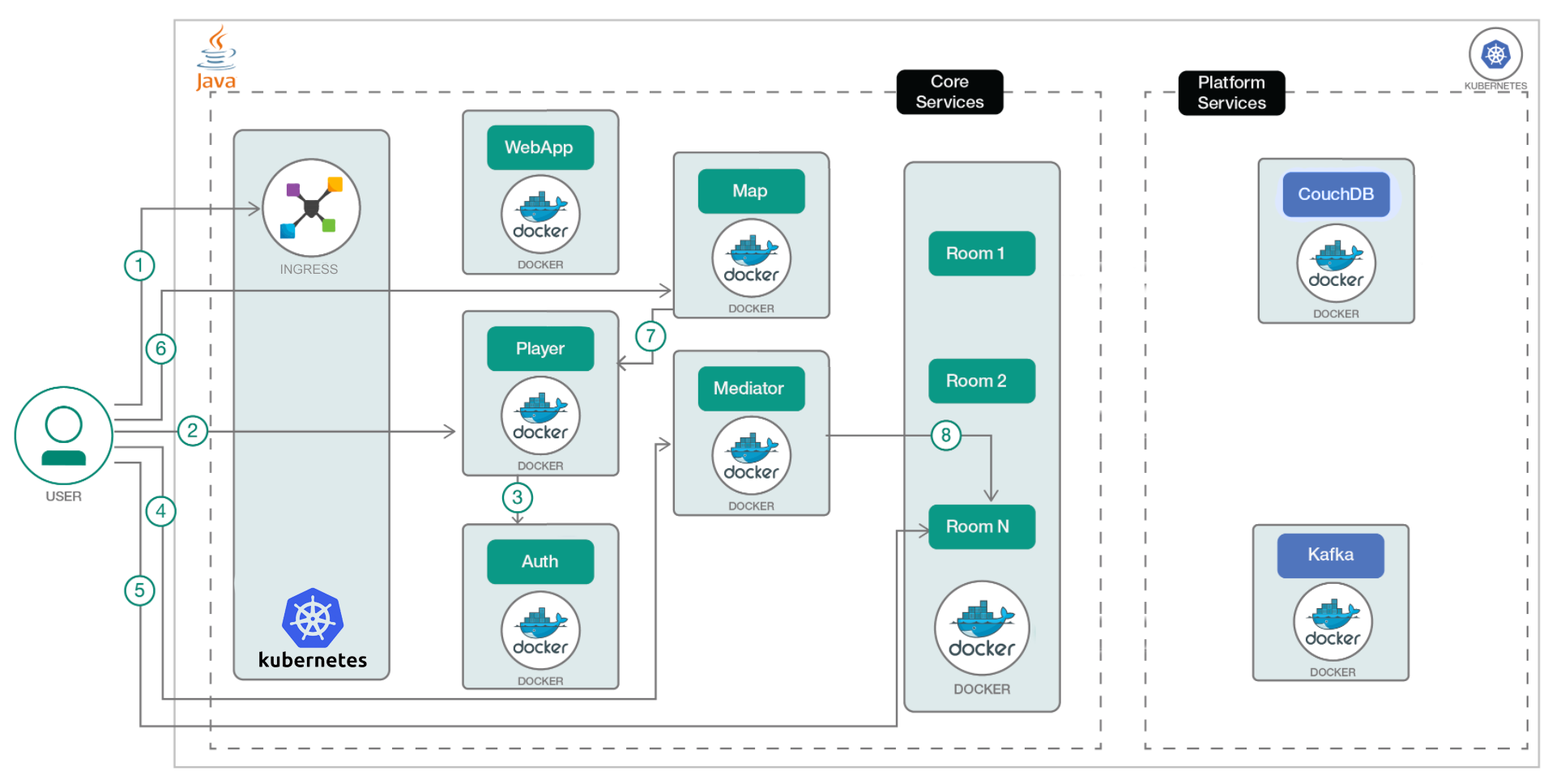Moving GameOn to Kubernetes
Game On! and Kubernetes
Here at Game On! central, we've been considering how to run on Kubernetes for quite some time, and during a pause in the recent Holiday Season, we had a chance to add Kubernetes support allowing you to run the core services locally.
This work partly builds on an earlier attempt to bring Game On! to Kubernetes back in May last year. We learnt a few lessons from that attempt, and like to think this attempt is a little cleaner.
Running Game On! in Kubernetes
Want to try it out? we've tested on minikube, and IBM Cloud Private (ICP).
It's as simple as;
- Setup your minikube/icp, and have kubectl installed locally, and configured to talk to your cluster.
- For minikube, you'll need to enable ingress with
minikube addons enable ingress - For ICP, this means you must execute the ‘configure client’ steps to authenticate to the cluster
- For minikube, you'll need to enable ingress with
- Clone the gameon root repository
git clone https://github.com/gameontext/gameon.git
cdto the cloned project, then into thekubernetesdirectorycd gameon/kubernetes
- set the environment variable
GAMEON_HOSTto the ip of your kubernetes cluster, if you are using minikube, this is probably 192.168.99.100, if you are using ICP via Vagrant, it will default to 192.168.27.100 (unless you altered the network in the Vagrantfile)export GAMEON_HOST=192.168.99.100
- run
./go-run.sh upthis will do the following for you..- create the kubernetes namespace
gameon-system - edit
ingress.yamlandgameon-configmap.yamlto insert your cluster ip as appropriate. - create a new self signed certificate/keypair, and load it into a kubernetes config map
- create the ingress, config map, couchdb, kafka, auth, mediator, map, player, and webapp deployments and services in kubernetes.
- create the kubernetes namespace
To check on progress, you can check the cluster gui, or use kubectl to check on the status of the pods in the gameon-system namespace. ( kubectl get pods --namespace=gameon-system -o wide)
After a short while, once the the pods are all up and running, you should be able to access your Game On! at https://gameon.192.168.99.100.nip.io
Swap 192.168.99.100 for your cluster ip, the same value you set in GAMEON_HOST
If you want to remove Game On! from your cluster, run ./go-run.sh down and the script will remove the artifacts it created.
Whats actually happening here?
Each of the core services has their own yaml, that contains both a kubernetes service, and a deployment. The deployment defines a replica set that will deploy the appropriate Game On! image in a pod, with the appropriate environment variables set with values from the config map defined by gameon-configmap.yaml. The certificate used by the core services to sign and validate JWTs is mapped into each container as a file, where the startup scripts are able to convert it into the keystore/truststore that are required by the Java pods.
The ingress.yaml defines a kubernetes ingress that acts as the front door for the whole setup, routing requests to the appropriate service. Requets are mapped using the path part of the URL just as happens in the proxy service when running outside of Kubernetes. ingress.yaml also defines and enables HTTPS for the front door, and if we wanted, we could configure a certificate to be used for HTTPS in the yaml here.
Lastly, we're using nip.io which is a handy service that allows you to create hostnames that map to ip addresses, without needing to edit /etc/hosts etc. Any url ending in ipaddress.nip.io resolves to ipaddress, so in our case gameon.192.168.99.100.nip.io will resolve to 192.168.99.100, this is great, because ingress definitions require a hostname, not an ip address, and this lets us create one for testing, without any setup.
TIP: your router may be “helpful” and block dns resolution for ip addresses in private networks, such as 192.168.x.x or 10.x.x.x, if so, look in your router for if you can configure a Domain Whitelist for nip.io for RFC1918 responses. This is required at least for OpenWRT/LEDE. If you can't unblock that, you'll have to resort to editing /etc/hosts or equivalent for your platform.
Pods of fun!
Now it's running inside Kubernetes, in future, we'll be able to scale the number of services, for better availability, and to enable graduated rollouts of newer service versions.
For now, thanks to handy tools like the IBM Cloud Private monitoring service we can look at say, how much ram each pod is using…
You can see similar, but less detailed information from minikube's dashboard, or install heapster with minikube addons enable heapster
As becomes quite apparent from the charts, Kafka eats almost 5 times the memory of our average service! Why not have a dig around and see what you can find out!


